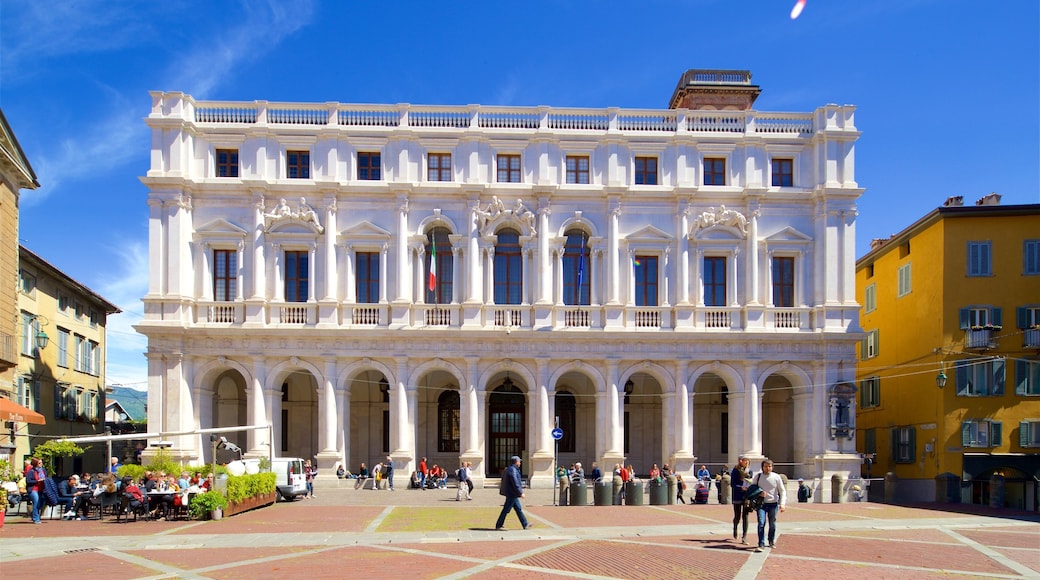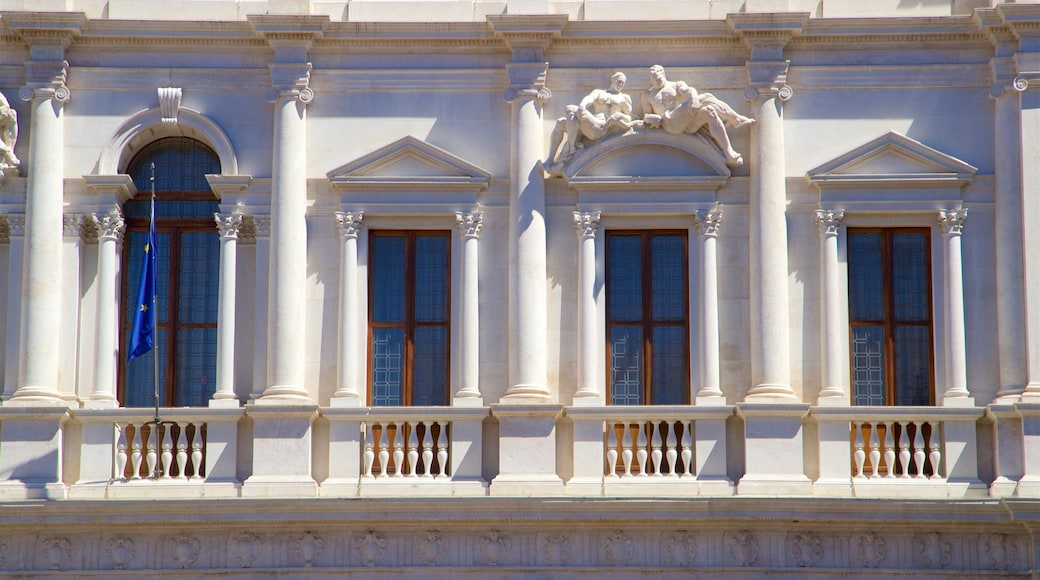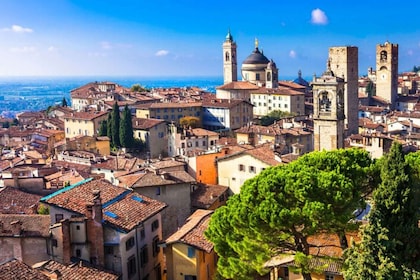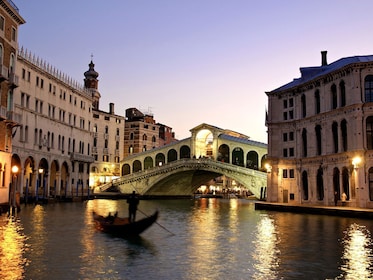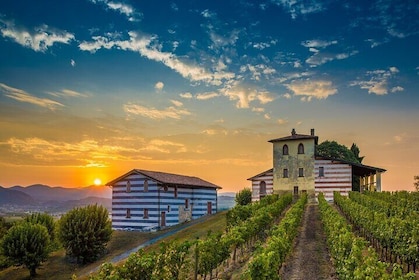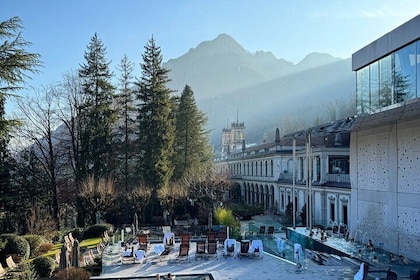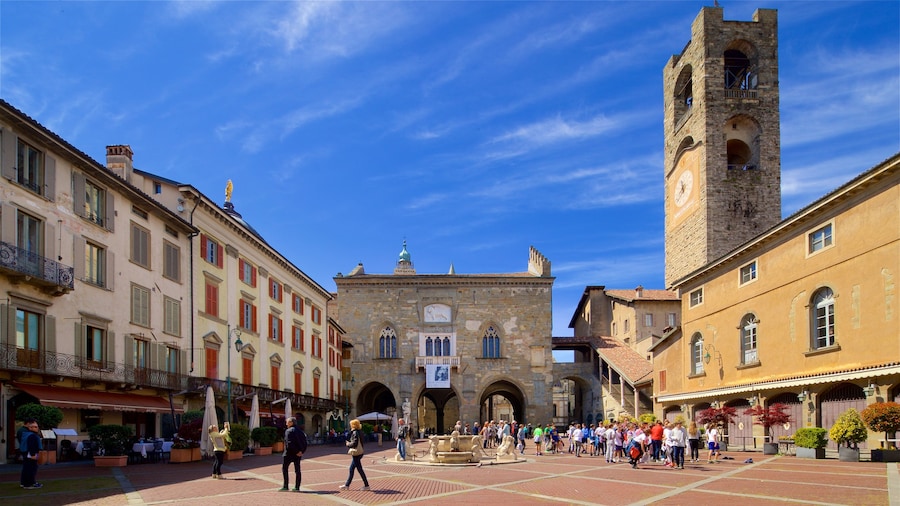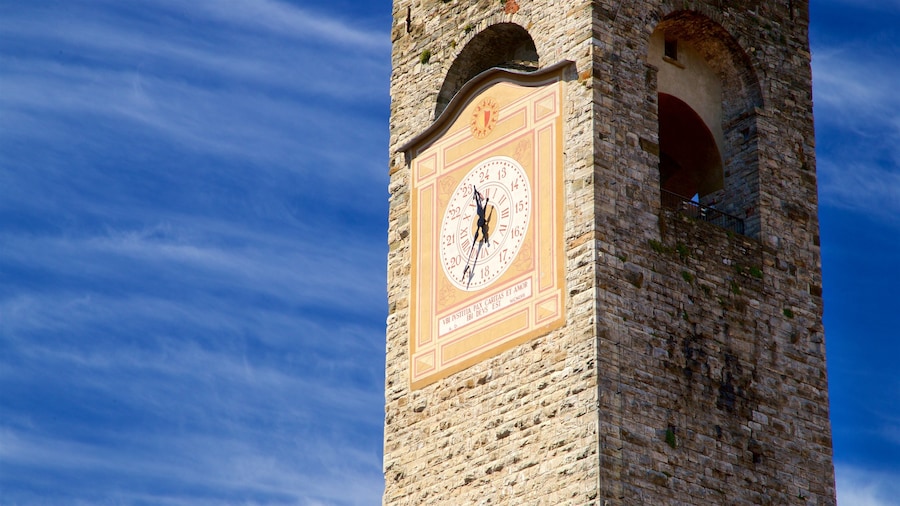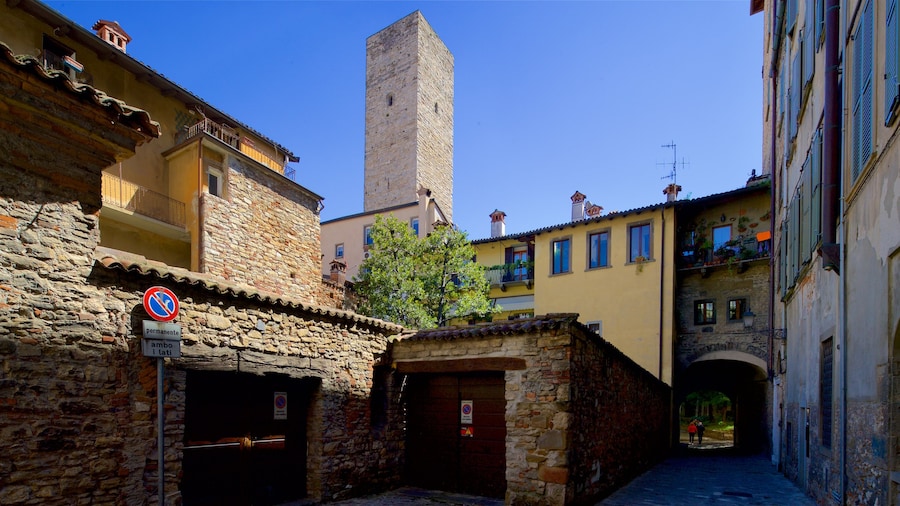Overlooking Bergamo’s Piazza Vecchia sits a white-marbled building that commands attention with its statues. Step into this building to uncover Bergamo’s history.
The Palazzo Nuovo is made from the same marble that was used for the commanding wall gate, the Gate of San Giacomo, which is visibly apparent from the lower portion of the city. Step inside the building that houses one of Italy’s great libraries, the Civica Angelo Mai, where precious documents of the region’s past are safeguarded.
Compared to other buildings on the Piazza Vecchia, this one is newer, hence the use of the word “nuovo.” The palazzo was probably named to contrast the opposite building, the Palazzo Vecchio, or old palace, that’s also known as the Palazzo della Ragione. The Palazzo Nuovo took three centuries to build, from 1604 to 1928. Look up and around in the entrance hall to view the classical elegance, in particular the Camozzi column that is in the shape of a tree and includes a lectern.
Notice the bust of Bergamo’s famous military captain of the 15th century, Bartolomeo Colleoni, who is buried in the nearby Colleoni Chapel that he had built. Prior to the Palazzo Nuovo being a library, it was the seat of local government until 1873. Explore the other impressive rooms, including Tassiana Hall that has a display of world globes made in the late 1600s by Italian cosmographer Vincenzo Maria Coronelli.
Look above the windows upon leaving to see six statues that represent agriculture, craftsmanship, industry, work, the Brembo River and the Serio River. Admire the placement of buildings on the square. The square was described by the famous architect Le Corbusier as “the most beautiful square in Europe…you can’t move a single stone, it would be a crime,” in reference to the square’s harmonious blend of structures.
Have a meal or refreshment in one of the square’s restaurants or cafés to fully appreciate the history that surrounds the piazza, with the Contarini fountain serving as a focal point.
